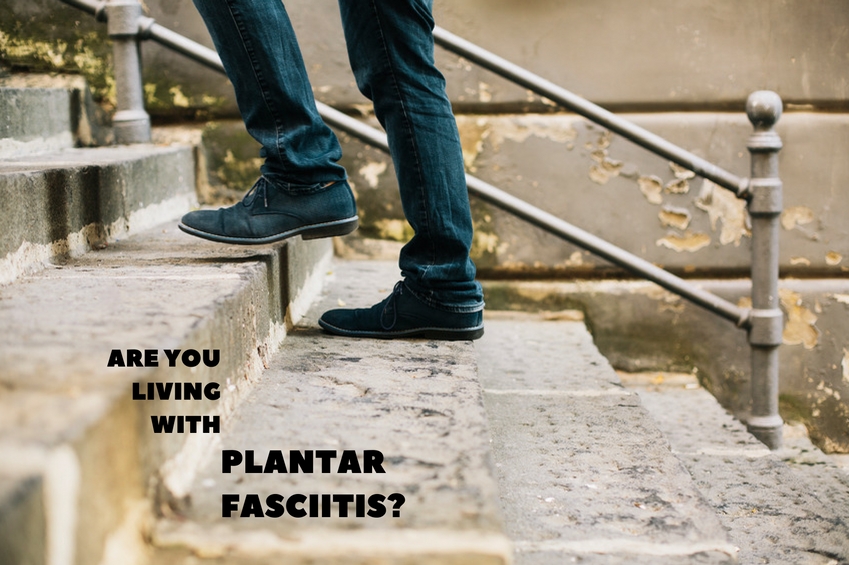When I had plantar fasciitis, I didn’t know it at first.
I woke up one morning after a run and swung my legs out of bed. As soon as I touched the floor, though, I felt a sharp pain on the bottom of my right foot. The pain continued with each step, but I decided it was a fluke and would get better on its own.
To my surprise, it did. Walking on it helped loosen what I decided was simply a tight muscle and the pain went away. Later that morning, though, I stood up after working at my desk for a few hours, and the intense pain was back.
What gives? I thought. I took to the web and quickly found the probable cause: plantar fasciitis – one of the most common causes of heel or arch pain and an ailment particularly common in runners.
Plantar fasciitis is an inflammation of the ligaments on the bottom of the foot known as the plantar fascia, said Dr. Matthew Enzweiler, a podiatrist with St. Elizabeth Physicians. The function of the plantar fascia is to tie the back of the foot to the front of the foot – from heel to toe – and support the arch.
Sometimes, though, the tension on the shock-absorbing plantar fascia becomes too great and causes small tears in the ligaments. If the plantar fascia are stretched and torn over and over again, it can cause them to become inflamed, resulting in pain in your heel or arch.
That’s why certain types of exercise put you at risk for plantar fasciitis, such as long-distance running. Other risk factors include age – plantar fasciitis is most common between the ages of 40 and 60 – faulty foot mechanics – such as being flat-footed or having a high arch – obesity, or occupations that require you to be on your feet all day.
If you’re at risk, incorporate more stretching into your routine, Enzweiler said. That’s the best prevention for plantar fasciitis because if your hamstrings, calf muscles and Achilles tendon are more flexible, it reduces tension on the plantar fascia.
It also turns out that I wasn’t very far off in thinking I had a tight muscle that just needed to be loosened up.
“Plantar fasciitis usually goes through a cycle where it’s worse in the morning – because you’ve been off your feet for some time – and gets better after a few minutes of walking on it, but if you sit down and get back up some time later it starts to hurt again,” Enzweiler said, “because the ligament starts to tighten up.”
Once you have plantar fasciitis, the best thing you can do for it is to stretch, Enzweiler said, especially before you get out of bed in the morning by using a towel or other band. You also can apply ice or heat to the bottom of your foot, as well as over-the-counter anti-inflammatory medications, such as Motrin, Aleve or Advil.
If your plantar fasciitis won’t go away – mine did after a week of icing, stretching and no running – you should see a doctor who likely will prescribe more powerful anti-inflammatory medications, a more rigid insole or orthotic for your shoe, or physical therapy and steroid injections.
However, you should know that your chances of getting plantar fasciitis again are higher once you’ve had it.
“The people who get it typically are active individuals,” Enzweiler said. “They usually start doing the same thing they did before as soon as their plantar fasciitis gets better. If they’re not incorporating more stretching into their routine, however, they definitely run the risk of getting it again.”
If you suspect you have plantar fasciitis, visit the St. Elizabeth Physical Therapy office at Burlington. The physical therapists at St. Elizabeth are highly trained to deal with the following issues:
- Arthritis
- Balance and Vestibular Rehabilitation
- Cerebral Palsy
- Chronic Pain/Fibromyalgia
- Custom Orthotics
- Gait Retraining
- Orthopaedics and Post Joint Replacement
- Incontinence
- Manual Therapy
- Massage Therapy
- Osteoporosis
- Post-Mastectomy/Lymphedema
- Spina Bifida
- Sports Medicine
- TMJ/D (Temporomadibular Joint Disorder)
- Traumatic Brain Injury, Stroke and other neurological deficits/disorders
- Women’s Health
- Women’s Health Physical Therapy
- Work Rehabilitation

